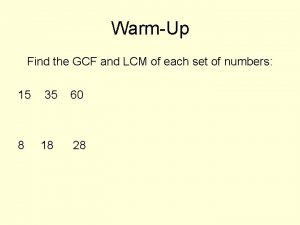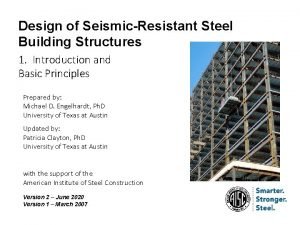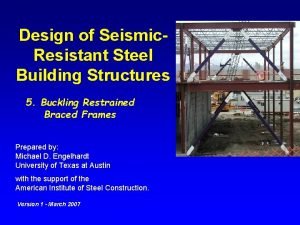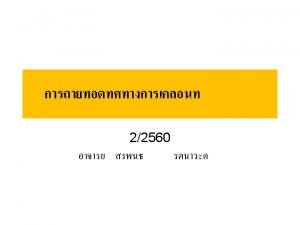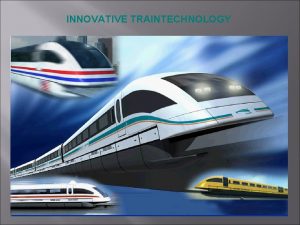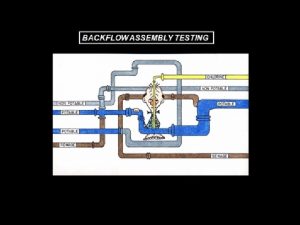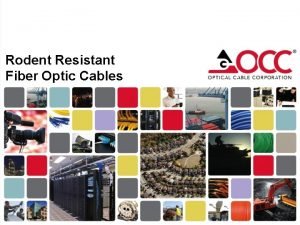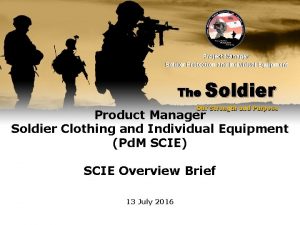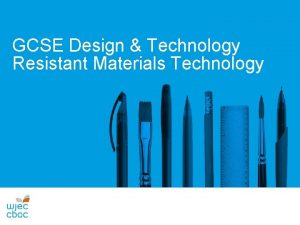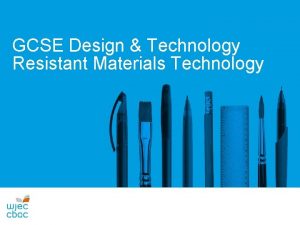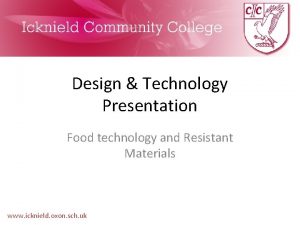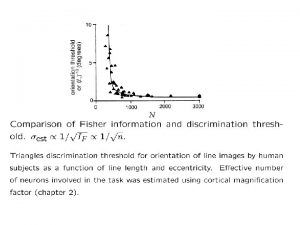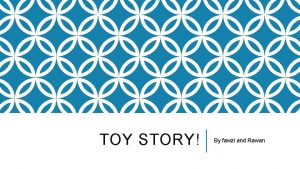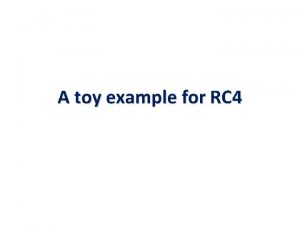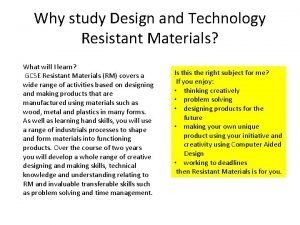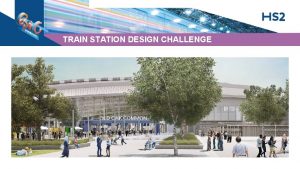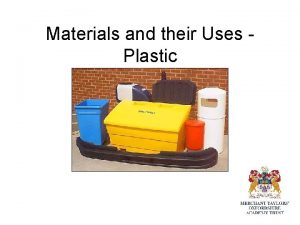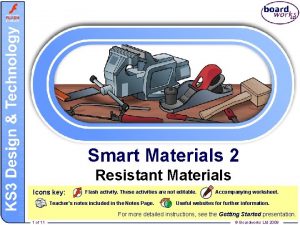Design and Technology Resistant Materials Toy Train Project















- Slides: 15

Design and Technology Resistant Materials Toy Train Project

PERSONAL LEARNING & THINKING SKILLS PLTS TASK End of Project CT 1 I can generate ideas and explore possibilities CT 2 I can ask questions to extend my thinking CT 5 I can try out alternatives or new solutions and follow ideas through RL 1 I can assess myself and others, identifying opportunities and achievements TW 1 I can co-operate with others to work towards common goals TW 2 I can reach agreements and manage discussions to achieve results TW 5 I can take responsibility, showing confidence in myself and my contribution SM 2 I can work towards goals, showing initiative, commitment and perseverance SM 3 I can organise my time and resources, prioritising actions SM 4 I can anticipate, take and manage risks SM 6 I can respond positively to change, seeking advice and support when needed HEALTH & SAFETY I HAVE BEEN TAUGHT TO USE THE FOLLOWING SAFELY : - Process/Equipment Student’s signature Hand Tools (Chisel & Tennon Saw) Pillar/Bench Drill Fret Saw Feedback Notation Sp - Spelling G – Grammar P - Punctuation C – Capital Letter T - Terminology // - Insert paragraph / - Sentence ^ - Missing word ? - Unclear meaning D – Date U – Underline V – Verbal feedback given

Toy Train Project Introduction During this 5 week project you will be introduced to a range of new skills, which will enable you to develop your design skills as well as your making skills. A resistant material is one that is hard to cut or shape. The ones we use in this activity are softwood, hardwood and MDF (Medium Density Fibreboard). The Skills Involved Health & Safety Issues – How to work safely in the surrounding environment. Sketching & Rendering Techniques – Improving the quality of your drawing and rendering skills to allow you to produce realistic, high quality presentations of your ideas and developments. Design Skills – You will develop and combine hand drawn skills and a variety of rendering techniques. Making Skills – Your project will be made using various hand tools, pillar drill and fretsaw. Key Words to Remember Softwood – Softwoods come from coniferous trees Hardwood – Hardwoods come from broad-leaved, deciduous trees. Coniferous – Softwoods, such as pine, come from coniferous trees. These keep their leaves all year round. Deciduous – Hardwoods, such as oak or beech, come from deciduous trees. These lose their leaves each winter. They tend to grow slower than softwoods Knot – A hard mass of wood at the point where a branch joins the trunk of a tree Grain – The pattern on the surface of the wood Plywood – Thin pieces of wood glued together Design Brief You are to design and make a toy train to sell in toy shops that have many outlets throughout the country. Your toy must attract young children and encourage them to ask their parents to buy it. It will be well made, safe and be finished to a high standard suggesting that every young child must have this toy.

Health & Safety in the Workshops (D&T Dept) Workshop Rules You are responsible for your own safety & the safety of others. 1. Wear an APRON at ALL times (always tied up at the back). 2. Long hair must be tied back. 3. ENSURE bags and coats are stored on the hooks provided. 4. ALWAYS follow instructions and rules. Do not take short cuts. Ask for help if you need it. 5. If you do not know how to use a piece of equipment, then don’t. Ask for help if you need it. 6. When using machinery ALWAYS wear EYE PROTECTION. 7. When using machinery ALWAYS use the MACHINE GUARDS. 8. Do not TOUCH machines or equipment unless you have permission. 9. NEVER blow dust or touch swarf. 10. NEVER run in the workshop. 11. When finished with a machine make sure tools are returned to the correct place. 12. ALWAYS stand up when doing practical work so you can quickly move out of the way if you need to. 13. Report any damaged or missing equipment before use. 14. Report any breakages, spillages or injuries to your teacher IMMEDIATELY. 15. When finished ENSURE your workspace is left CLEAN & TIDY. 16. NEVER eat or drink in the workshop. Ask permission if you need to go outside for a drink. 17. NEVER remove anything from this workshop. 18. NEVER misuse or tamper with equipment or machines. 19. NEVER tamper with other people’s work or belongings. Students – please read and sign below I have read and I agree to the above guidelines on health and safety. (Students can be withdrawn from practical work if safety is compromised. ) Signature of student _____________

Health & Safety Picture Name Safety Rules 1. 2. 3.

Softwoods come from coniferous trees which have needles instead of leaves. Softwoods grow faster than hardwoods and so are cheaper they are also easier to work with as they are typically softer than hardwoods. This makes them ideal for using in the construction trade because they are cheap and relatively renewable with their fast growing speeds. Softwood properties: • Softwoods come from coniferous trees. (they do not loose their leaves) • Softwoods have needles instead of leaves. • Softwoods grow faster than hardwoods this makes them cheaper. • Often used as building material. • Trees grow tall and straight which makes it easier for the manufacturer to cut long straight planks of wood. Softwood types Scots pine - A straightgrained softwood but knotty. Light in colour. Fairly strong but easy to work with. Cheap and readily available. A softwood. Parana pine - Hard and straight-grained. Almost knot free. Fairly strong and durable. Expensive. Pale yellow in colour with red/brown streaks. A softwood. Spruce - Creamy-white softwood with small hard knots. Not very durable. A softwood. Grain image Softwood uses Used for DIY and cheap quality furniture. Mainly used for constructional work and simple joinery. Used for good quality knot free pine red / brown furniture such as doors and staircases. Used for general indoor work, whitewood furniture used in bedrooms and kitchens. Yellow cedar - A pale yellowcoloured softwood with a fine even texture. Light in weight but stiff and stable. Used for furniture, boat building, veneers, and model making. European redwood - Quite strong, Lots of knots, durable when preserved. cheap Used for general woodwork, cupboards, shelves, roofs. Example product

Softwoods Research Read the text about softwoods research and then answer these questions below. • Define a softwood? • Sketch an example of what soft wood tree might look like. • What are the typical softwood properties? • What is special about these types of trees? • Name at least 3 types of softwood: – Describe them – What are they used for Add colour to make this page stand out.

Plastics Research What are plastics? Plastics are the most widely used material in commercial production. Plastics can be created from two main sources which are natural and synthetic materials Source one - Natural plastics: include amber which is fossilised tree resin, latex which is a form of rubber. Amber which is fossilised tree resin Rubber being drained from a rubber tree Source two - Synthetic plastics: are chemically manufactured from carbon based materials such as crude oil, coal and gas. Crude oil works A piece of coal What groups of plastics exist? There are two main groups of plastic which are thermosetting plastics and thermoplastics. Thermoplastics can be heated and shaped many times. Thermoplastics will soften when it is heated and can be shaped when hot. The plastic will harden when cooled, but can be reshaped because their is no links between the polymer chains. Some common thermoplastics are ABS (acrylonitrile butadienestyrene), Nylon (polyamide), acrylic (polymethyl methacrylate), u. PVC (polyvinyl chloride), polystyrene, polypropylene and cellulose acetate.

Plastic Research Thermosetting plastics can only be heated and shaped once. If re-heated they cannot soften as polymer chains are interlinked. Separate polymers are joined in order to form a huge polymer. The main thermosetting plastics are epoxy resin, melamine formaldehyde, polyester resin and urea formaldehyde Read the text about plastic research and then answer these questions below. 1. What two main sources from which plastic can be made? 2. Name a natural plastic? 3. How are synthetic plastics made? 4. What two groups of plastics exist? 5. Describe thermosetting plastics and thermoplastics in your own words? 6. What is the main difference between thermosetting plastics & thermoplastics? 7. Name the main thermosetting plastics? 8. Name the main thermoplastics?

ACCESSFMM Aesthetics – what should it look like ‘It should be colourful because………… Cost – how much should it cost ‘It should cost………………because……… Customer – who is it for ‘It should be for …………because……… Environment – how friendly ‘It should …………. . because……… Safety – why/how will it be safe ‘It should be safe because………………… Size – how big should it be ‘It should fit……………because…… Function – what should it do ‘It should…………because………… Materials – what is it made from ‘It should……………because………… Manufacture – how will it be made ‘It should……………because……… Splinters Entertain Pine Luxury Cheap Affordable Steel rule Aprons Gents saw Soft wood Natural Smooth Sharp Fret saw Coniferous Pencil RDS O W KEY Goggles Recycle/reuse/rethink Hand tools Pillar drill Sand paper Chisel Vice Try square YELLOW ASSESSMENT STICKER

Specification ‘LISTING THE DESIRABLE OR REQUIRED FEATURES OF A NEW PRODUCT e. g. FUNCTIONS, BUDGET LIMIT, TIME LIMIT, APPEARANCE. MUST INCLUDE REASONS FOR POINTS. ’ Write a Design Specification using ACCESSFMM (see next page) for your train. It should contain points relevant to materials, sizes, who its for, etc. 1. 2. 3. 4. 5. 6. 7. 8. 9.

Design Ideas On this page you will be expected to produce 3 very different Design Ideas. They must be drawn neatly, accurately and rendered to a high standard.

Annotation of Design Ideas 1. Which of your 3 Design Ideas do you think has the most good points and what are they? __________________________________________________ 2. Which Design Idea has the most bad points and what are they? __________________________________________________ 3. With further development, which Design Idea do you think would be the most suitable to be sold to Year 7 pupils in school and why? Give 3 Reasons __________________________________________________ _________________________ 4. Which of these Design Ideas do you think would be most difficult to make? Give reasons for your choice. __________________________________________________ 5. List as many other suitable materials that could be used to make your design instead of Plywood. __________________________________________________ 6. If your train was to be made for a 4 Year Old instead, what would you need to consider changing for it to be suitable? __________________________________________________

Mid term Definitions Key Word FSC Pine Medium Density Fibreboard Varnish Dowelling PVA glue Knot Annual rings Grain Tri-square Definition

FEEDBACK AND EVALUATION At the end of any project we have to complete an Evaluation of our work. This means we have to look back at the way we’ve worked, the quality of our work and the success of our final outcome. 1. Did you enjoy this project? Give one reason for your answer. ____________________________________________________________ 2. Do you think you worked to your best ability throughout the project? Give an example. ____________________________________________________________ 3. Does your final outcome meet your Specification requirements? Give two examples to explain your answer. ____________________________________________________________ 4. Are there any improvements you could make to your design work? Give one example ____________________________________________________________ 5. Are there any improvements you could make to your final outcome? Give one example ____________________________________________________________ 6. Is your design suitable for the intended Target Audience? Explain your answer. ____________________________________________________________ 7. Describe two new skills that you have learned whilst doing this project. ____________________________________________________________ 8. How would you improve the project? ____________________________________________________________
 God of secrets name
God of secrets name Toy thai
Toy thai Resistant materials tools
Resistant materials tools Keywords of hcf and lcm
Keywords of hcf and lcm Lcm key words
Lcm key words Griddable definition
Griddable definition Seismic design category
Seismic design category Design of seismic-resistant steel building structures
Design of seismic-resistant steel building structures Snail drop cam
Snail drop cam Innovative train technology
Innovative train technology Spill resistant vacuum breaker
Spill resistant vacuum breaker Cyanide-resistant respiration slideshare
Cyanide-resistant respiration slideshare Collision resistant hash function
Collision resistant hash function Cryptographic
Cryptographic Fiber optic cable rodent protection
Fiber optic cable rodent protection Kyloc usmc
Kyloc usmc



